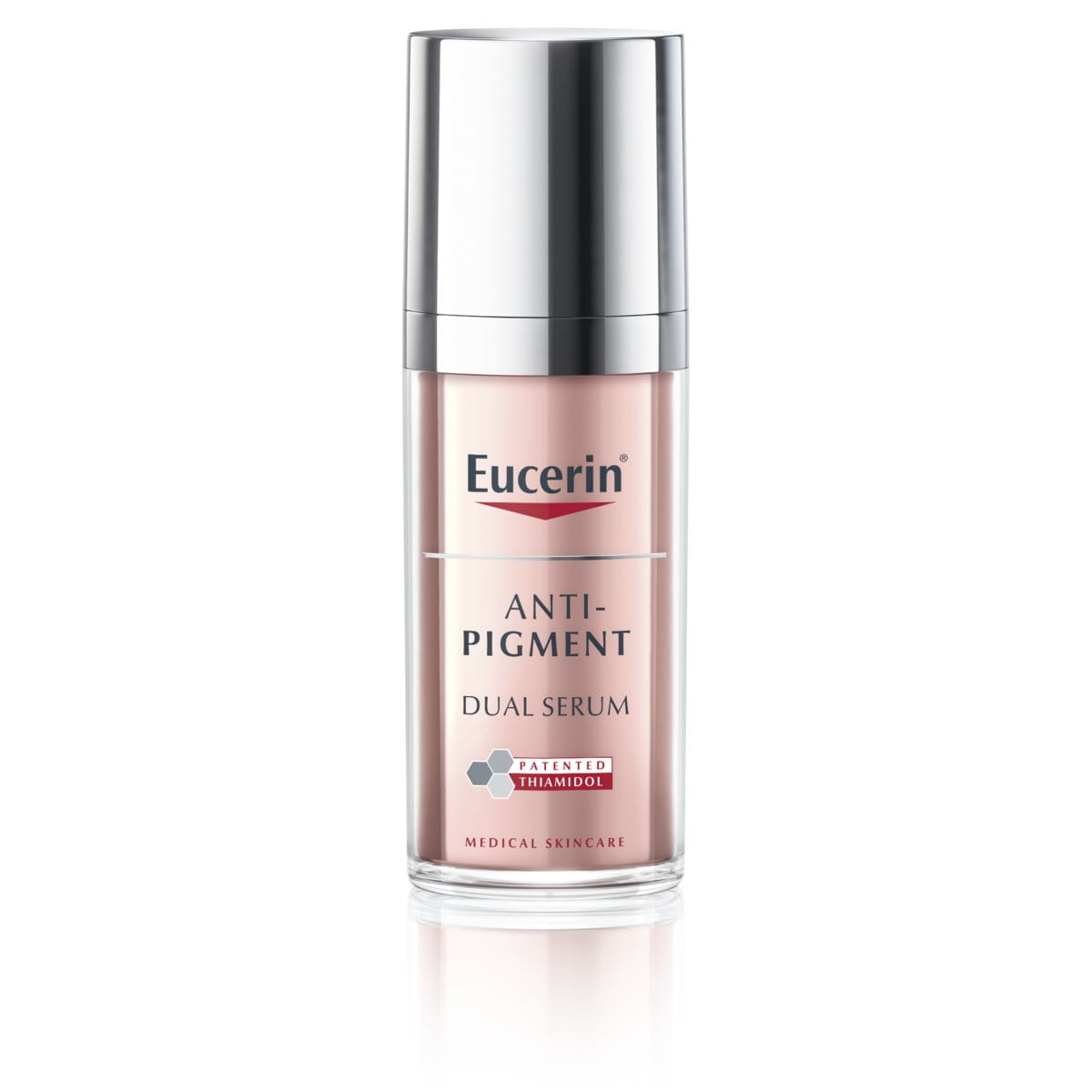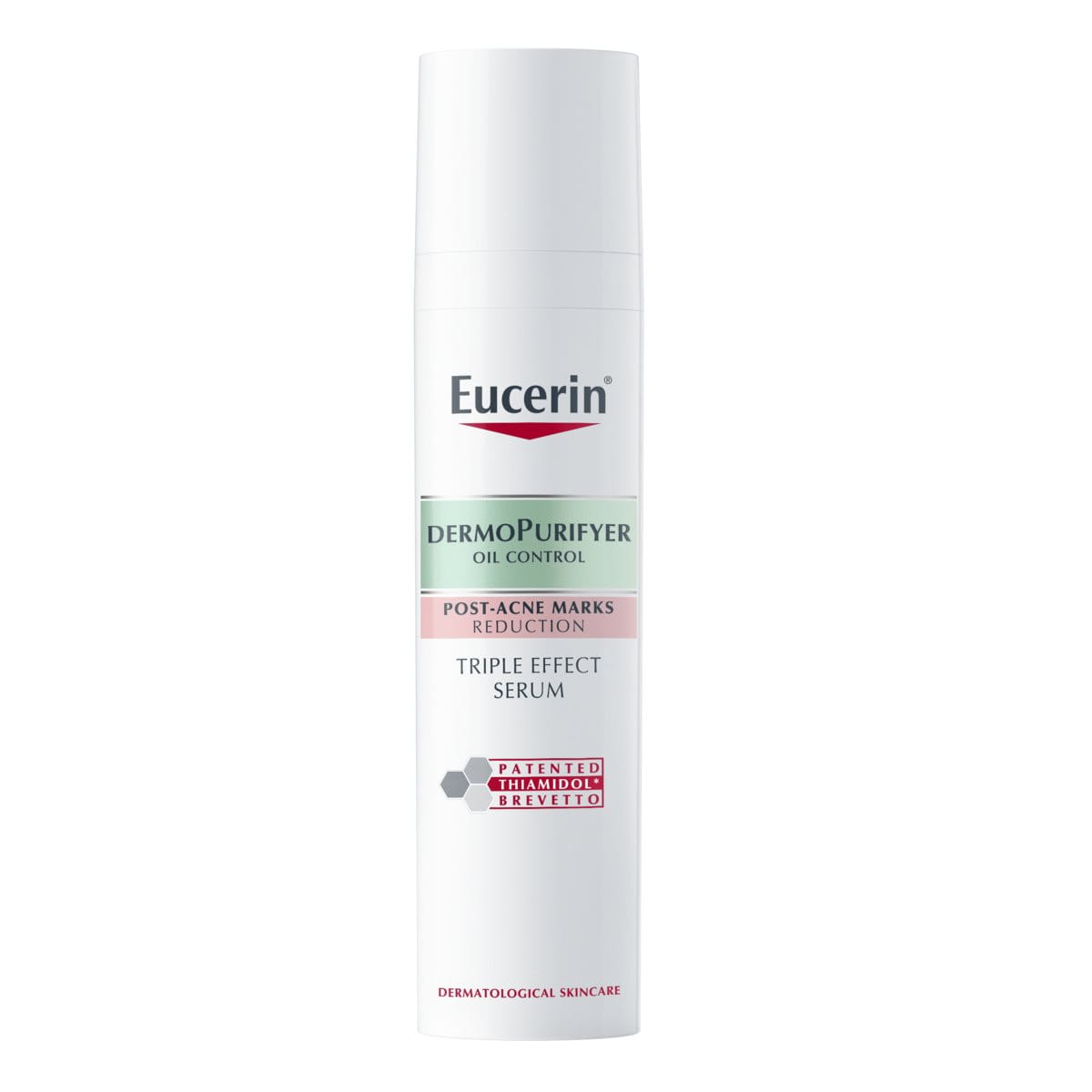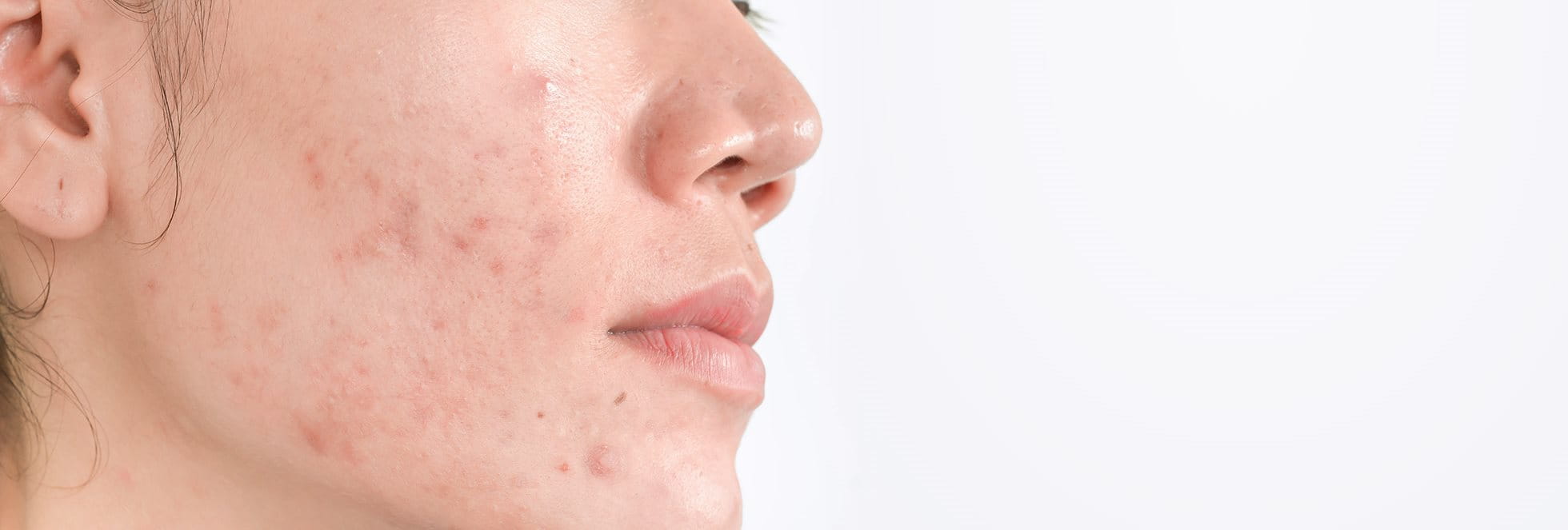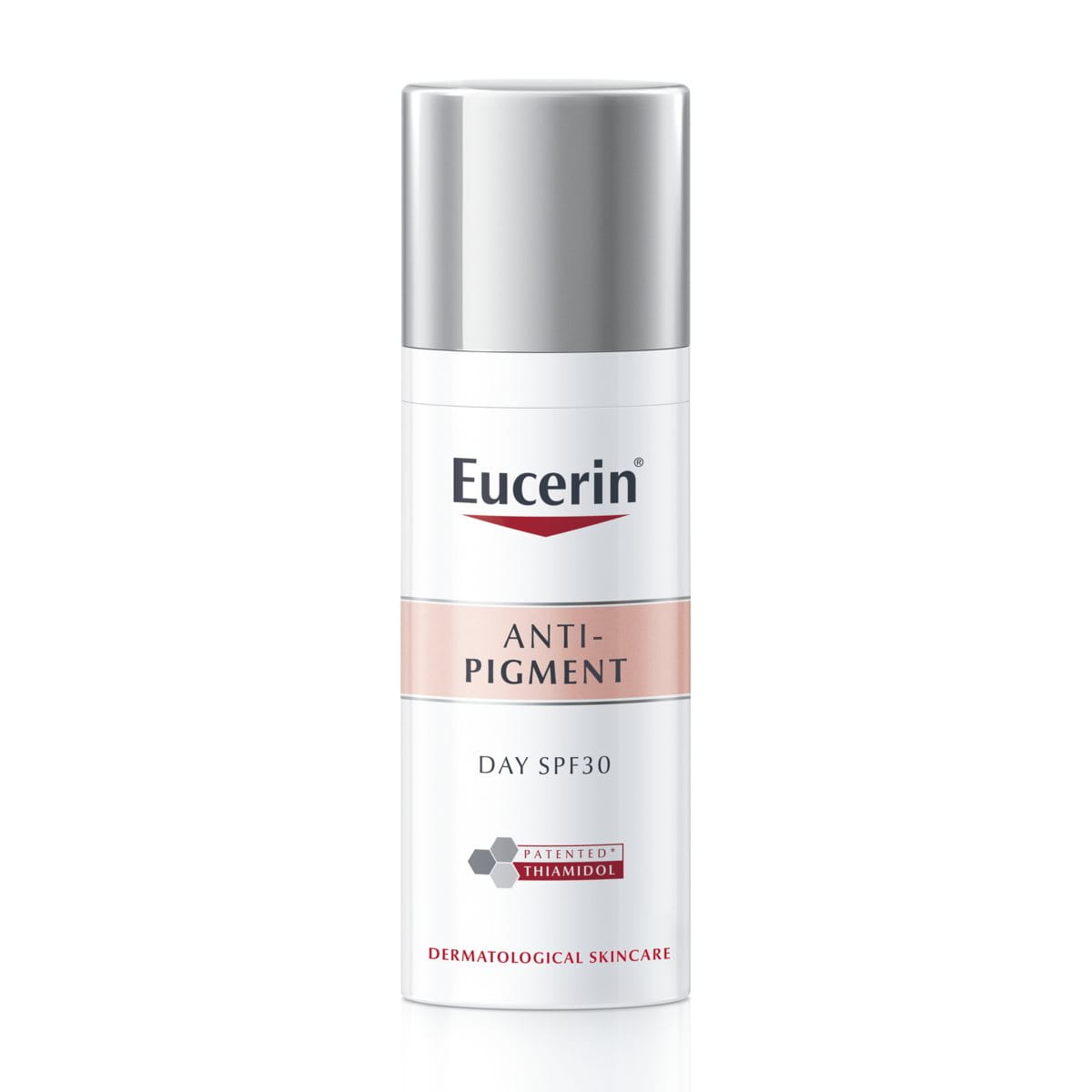As its name suggests, post-inflammatory hyperpigmentation occurs following skin injury or inflammation when skin is left darkened and discoloured after the wound has healed. This article looks at how post-inflammatory pigmentation affects skin’s appearance and what causes it. We also identify treatment steps you can take to help reduce the appearance of dark spots and patches on your skin.
What is post-inflammatory hyperpigmentation and what causes it?
Post-inflammatory hyperpigmentation (PIH), also known as hyperpigmentation caused by inflammation, is a type of hyperpigmentation that often appears after injury to the skin or following an inflammatory skin condition such as dermatitis or acne.
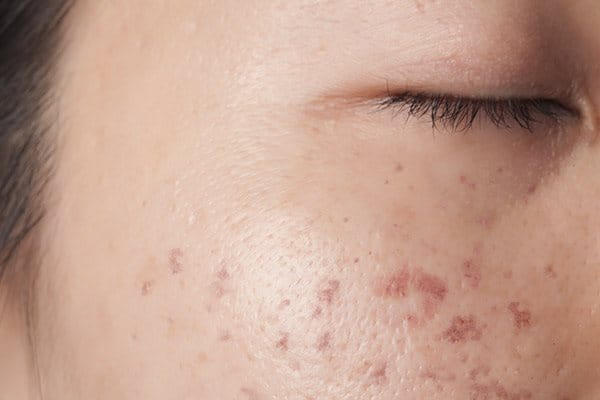
PIH can affect the face and body, appearing as flat dark spots of discolouration and creating an uneven skin tone. These range in colour from brown or black, depending on skin tone and the depth of discolouration.
Men and women are equally susceptible, and whilst all skin types can get post-inflammatory hyperpigmentation it is more prevalent in people with darker skin tones. In fact, PIH is one of the most common reasons why people with darker skin seek the advice of a dermatologist1.
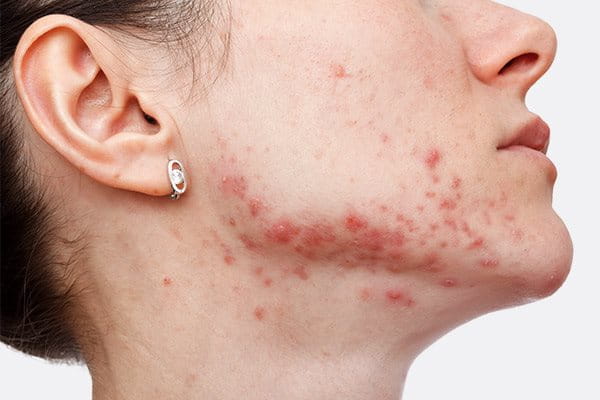

PIH often affects people with acne and it can sometimes be triggered by skin treatments such as dermabrasion, chemical peels and laser therapy.
An injury, rash or blemish causes skin to become inflamed. This inflammation triggers melanocytes - the melanin-producing cells – to release excessive melanosomes (pigment granules). The excessive pigment granules darken and discolour the formerly wounded area, remaining there long after the initial wound has recovered.
The more inflammation there is, the more obvious the area of discolouration will be both in terms of size and colour. And, in cases where PIH is caused by acne, picking pimples can worsen the skin condition, leading to increased hyperpigmentation.
In some cases, inflammatory acne can result in pink, red or purple coloured pigmentation, which is more commonly referred to as post-inflammatory erythema (PIE). PIE refers to discolouration as a result of damage to capilaries in the skin’s surface, whereas PIH mainly refers to the pigment change following a skin condition. Both PIE and PIH tend to reduce with time, although acne scarring can be textural and permanent.

Whilst not the cause of PIH, the sun can aggravate symptoms, darkening the affected patches and prolonging the time it can take for them to fade. The sun is closely associated with other forms of hyperpigmentation such as age spots, also known as sun spots, and melasma.
Post-inflammatory hyperpigmentation is harmless but melanoma can be life-threatening. If you have any concerns about your dark pigment spots – if they change shape, size and color or if they become itchy and start to bleed – it’s important that you consult your doctor.
What can I do to help prevent dark spots from forming?
If your skin is injured or blemish-prone, or if you suffer from skin conditions such as atopic dermatitis or psoriasis, it’s important that you take care of your skin in order to reduce the chances of post-inflammatory hyperpigmentation.
Appropriate medication and/or a regular skincare routine using products that have been specially formulated to address your skin’s needs will help:
- Blemish-prone skin: find out how to reduce blemishes with our skin care routine for acne-prone skin, and find out more about the Eucerin DermoPurifyer range.
- Atopic skin: read how to calm and care for adult atopic skin and find out more about the Eucerin AtoControl range.
- Skin undergoing dermatological treatments: find out how best to care for your skin after laser treatment and discover Eucerin Aquaphor Soothing Skin Balm.
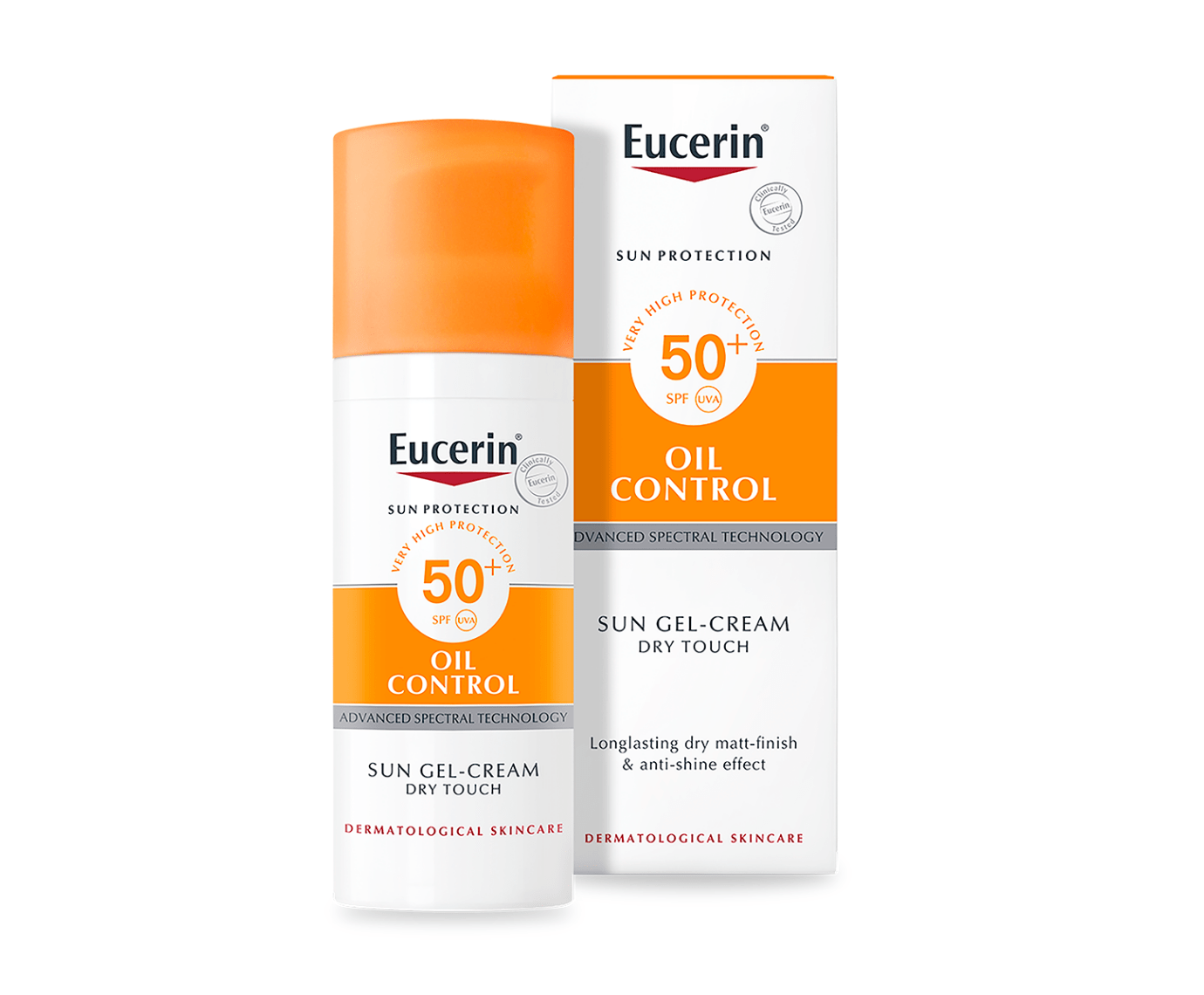
A sensible attitude to sun protection will also help to prevent or reduce the severity of PIH:
- Limit the time you spend in the sun - keep out of the sun during its most intense hours
- Wear protective clothing and sunhats whenever possible
- Apply a sun protection product that offers the level of protection your skin needs and that is proven to be suitable for your skin type and/or condition.
Eucerin’s superior sun protection range can help prevent PIH and includes face and body products that are suitable for blemish-prone skin, atopic skin and skin that has recently undergone dermatological treatments.
Post-inflammatory hyperpigmentation treatment
Post-inflammatory hyperpigmentation does not cause scarring and even with no treatment it will improve over time. Recovery rates vary from person to person: the timing depends on the difference in skin tone between the natural skin tone and the darkened patches – the more significant the difference, the longer it will take for the uneven skin tone to rebalance.
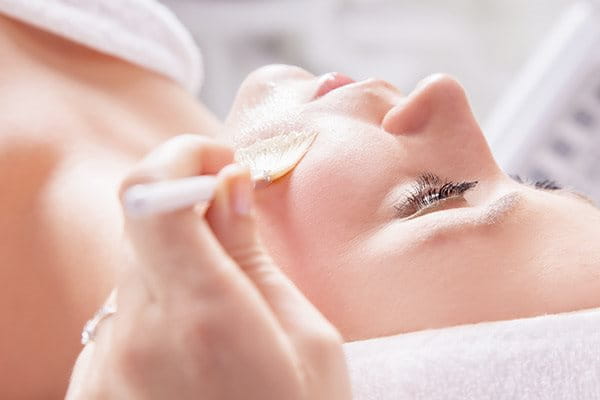
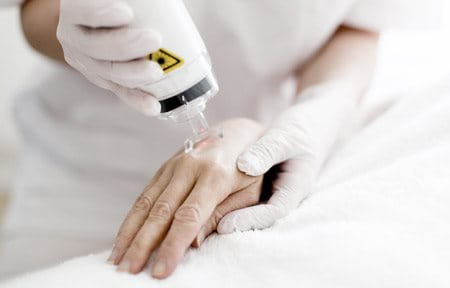
Dermatological treatments for post-inflammatory hyperpigmentation, such as chemical peels and laser therapy, can improve symptoms and speed up recovery time:
Chemical peels involve applying a chemical solution (such as an AHA) to exfoliate skin (remove dead skin cells), stimulate the growth of new skin cells and reveal new skin.
Laser therapy has a similar effect but tends to be more precise as the dermatologist has more control over the intensity of the treatment. Laser treatments involve ‘zapping’ the affected areas with high-energy light. The mildest treatments work on the skin’s epidermis (surface layer), while more intense treatments can penetrate the deepest layers of the skin. Find out how best to care for your skin after laser therapy.
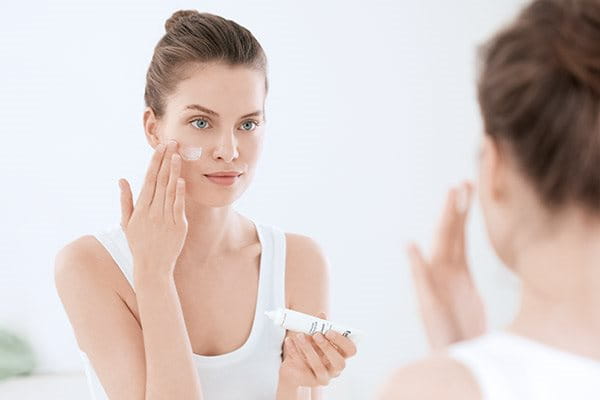

Dermatologists may also prescribe and/or use hydroquinone which is still regarded as the most effective topical agent for reducing post-inflammatory hyperpigmentation. It can, however, only be used for limited periods of time because, like other forms of chemical peel and laser treatment, it can irritate skin and actually cause post-inflammatory hyperpigmentation, especially in people with darker skin tones.
Dermo-cosmetic skincare products can be used daily to help extend the results of dermatological treatments.
The Eucerin Anti-Pigment range contains Thiamidol, an effective and patented ingredient that acts at the root cause of hyperpigmentation by reducing melanin production. It has been clinically and dermatologically proven to reduce dark spots and prevent their re-appearance. The Dual Serum now comes in a mono-chamber pack that combines the two key active ingredients for easier application and same proven efficacy. Discover the range today and take the first step to treating your PIH.
1- Postinflammatory hyperpigmentation: a review of the epidemiology, clinical features, and treatment options in skin of color. E.C. Davis and V.D. Callender. J Clin Aesthet Dermatol. 2010 Jul; 3(7): 20-31
Our brand values

We deliver a holistic dermo-cosmetic approach to protect your skin, keep it healthy and radiant.

We work together with leading dermatologist and pharmacist partners around the world to create innovative and effective skincare products they can trust and recommend.

For over 100 years, we have dedicated ourselves to researching and innovating in the field of skin science. We believe in creating active ingredients and soothing formulas with high tolerability that work to help you live your life better each day.
